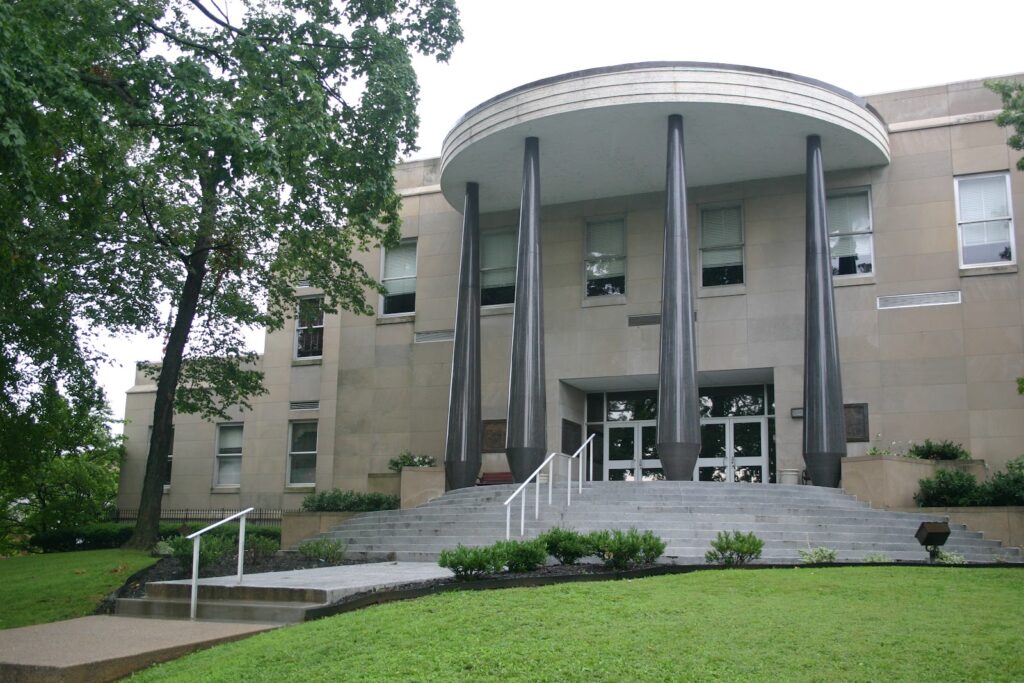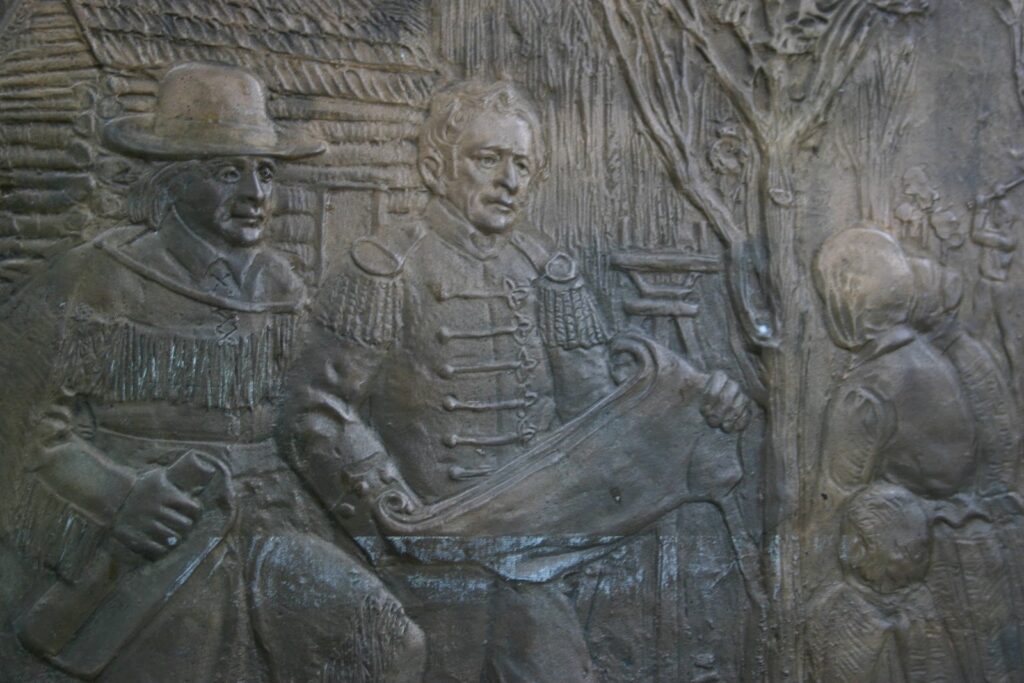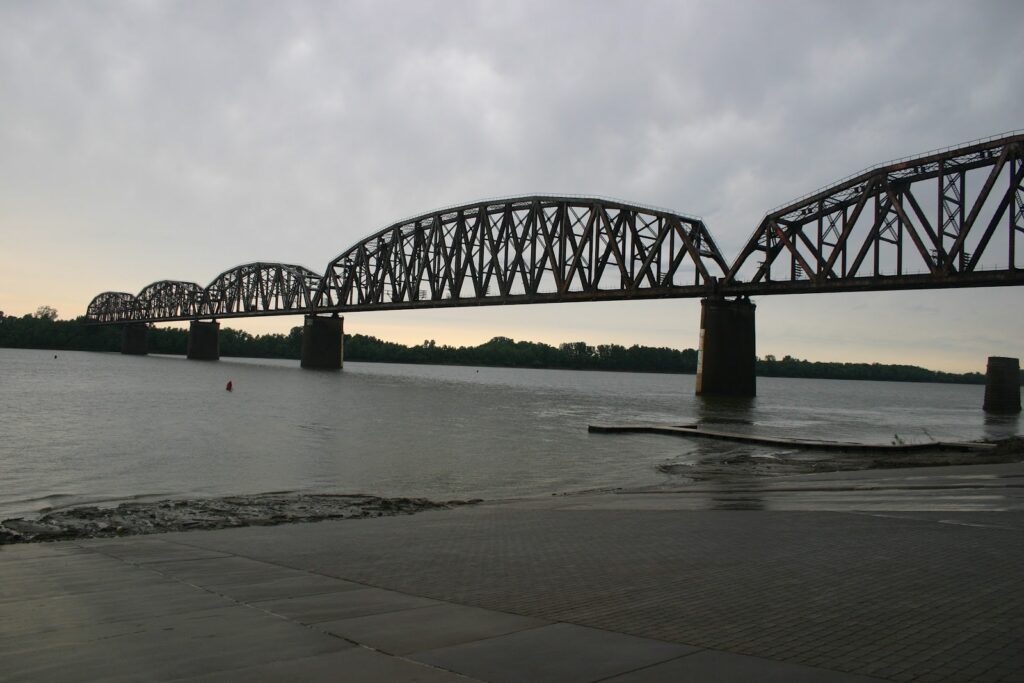 |
| Henderson County Courthouse – Henderson, Ky. Photo: NRK |
For me, the Henderson County Courthouse was a breath of fresh air. So often, when a county decides to build something new to replace the old courthouse, they build something that looks like a Soviet-era bunker.
 |
| Former Henderson County Courthouse Source: KDL |
Regardless of my opinion of the new courthouse, the demolition of the previous courthouse (pictured at right) was hotly disputed. The decision in the 1960s to destroy the former, circa 1843, courthouse occurred only after a major dispute with preservationists.
In the end, preservationists succeeding only in delaying the demolition of the ca. 1843 courthouse by four years through the use of a restraining order.
That previous courthouse was a two-story brick Greek Revivial with cupola which served as a prison, cookhouse, fort, and Civil War headquarters and hospital during its 120 years as the heart of Henderson County.
The above courthouse is the fourth in Henderson, and it sits on an enormous courthouse lawn. In fact, the site is allegedly the site of an ancient Indian mound.
 |
| Bronze Reliefs. Photo: NRK |
This courthouse has these amazing dark marble columns around a semi-circular portico that are both modern and reference to the past. It was built in 1964-65 and cost just over half a million dollars. There are some amazing bronze reliefs near the entrances that detail a few notable events history of the county. The one below shows the surveying of the land that would become Henderson.
As has become the standard in Kentucky, what we have described as the Henderson County courthouse is not, actually, the current courthouse. Like so many other counties, the newer Henderson Judicial Center was completed in 2003 for just under $10 million.
 |
| Ohio River at Henderson, Ky. Photo: NRK. |
Henderson was established on an existing settlement known as Red Banks. Due to its position on a bluff, the river town didn’t flood as much as others, and served as an important commerce point due to its position at the confluence of the Ohio and Green Rivers. When it was incorporated in 1810, one of the town’s 160 residents was John J. Audubon, the noted ornithologist, who operated a general store.
